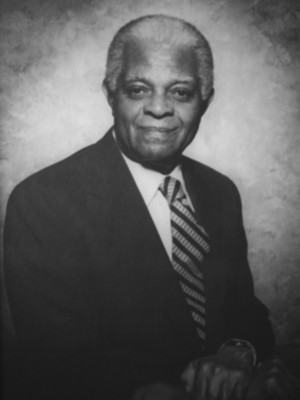A Rich History
The Cooperative Extension at N.C. A&T has a rich history dating back to its establishment in 1914. As a vital partner of the N.C. Cooperative Extension alongside N.C. State University, N.C. A&T plays a unique role in bringing research-based agricultural knowledge and educational programs to farmers and rural communities in North Carolina.
Over the years, the Extension program's mission has evolved to encompass many areas beyond agriculture. While the Extension program focuses on improving farming practices and increasing productivity, it has also expanded its reach to address more than a dozen other important topics:
- 4-H Youth Development
- Agriculture & Food
- Animal Agriculture
- Forest Resources
- Commercial Horticulture, Nursery & Turf
- Community
- Health & Nutrition
- Farm Health & Safety
- Field Crops
- Food Safety & Processing
- Lawn & Garden
- Local Foods
- Home & Family
- Pest Management
- Soil, Water & Air
- Specialty Crops

In 1952, R. E. Jones said that “North Carolina ranked first among the states in the number of black county employees and specialists, had the largest state extension staff of any state, was one of the first states to employ full-time black clerical employees and was the only state where an office building had been constructed with state funds for use by black administrators and specialists.”
Today, our Extension program proudly serves all 100 counties of North Carolina, including urban and suburban areas. By collaborating closely with local volunteers and leaders, the Cooperative Extension program empowers individuals to make informed decisions and enhances their overall quality of life.
A few notable moments in our history…
- The 1862 Morrill Act, a legislative act of the U.S. Congress, provided each state with grants from federal land sales to be used to establish public institutions to teach agriculture, military tactics, mechanical arts and classical studies.
- Then the 1890 Morrill Act led to the creation of black land-grant universities in the U.S. and the founding of The Agricultural and Mechanical College for the Colored Race (now N.C. A&T State University) in 1891. N.C. A&T was established at Shaw University in Raleigh in 1891 and relocated to Greensboro in 1893.
- The Negro Farmers Conference (1892) held the first formal outreach activities aimed at black farmers, rural communities and their citizens. The conference was held on the campus of Tuskegee Institute in Alabama under the leadership and guidance of Booker T. Washington and George Washington Carver.
- In June 1906, the Tuskegee Institute, under the leadership of Booker T. Washington and the direction of George Washington Carver, introduced the “Jesup Wagon” to the agricultural community and ushered in a new era of agricultural demonstration work within its Negro Extension Program. The wagon was known as the “Moveable School,” taking agricultural education and outreach to rural black farmers.
- In 1919, Dazelle Foster Lowe, along with 40 other black women, was hired as an emergency Home Demonstration Agent to meet the needs of homemakers during World War I. Emergency agents were employed during the summer to teach blacks to can and preserve their fruits and vegetables in order to contribute to the war effort, along with lessons on sanitation, health, and home improvement. She worked in Davidson County and was made a full-time home demonstration agent in 1923. By 1925, Dazelle Foster Lowe was named Negro District Home Agent, ranking her over all black home demonstration agents in North Carolina.
- In 1936, Black 4-H club membership reaches 10,000 in North Carolina.
- In 1962, the first integrated statewide Extension Conference is held in Asheville, N.C. The meetings were integrated but lodging and meals of black workers were still segregated from that of white workers. As a result of the Civil Rights Act of 1964, the black and white branches of the N.C. Agricultural Extension Service merged into a single organization in 1965 with headquarters in Raleigh.
- In 1972, Congress approved the appropriation of $4 million for Extension work and $8 million for research at the 16 historically black (1890) land-grant colleges and universities in the U.S. Then Congress approved The Food and Agricultural Act of 1977, which not only appropriated funding for both 1890 Extension and research but also channeled Extension funds directly to individual campuses. For the very first time ever, federally appropriated funds for Extension work came direct to N.C. A&T without fiduciary accountability to N.C. State University.
- In 2010, the Extension became the first 1890 university to create the 4-H National Science Experiment and the only institution in the Southern region to have done so thus far.



